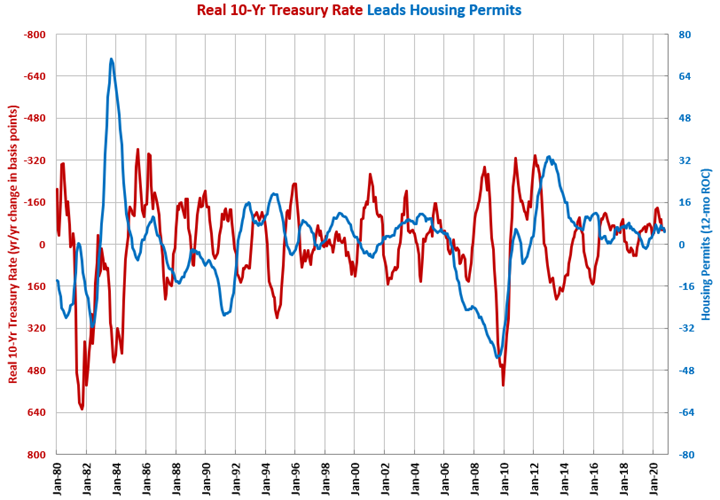Housing Permits Grow Four out of Five Months
There were 132,900 housing permits filed in October 2020, which was the third month in the last four with more than 130,000 permits filed. That has not happened since March to June 2007.
There were 132,900 housing permits filed in October 2020, which was the third month in the last four with more than 130,000 permits filed. That has not happened since March to June 2007. COVID-19, work-from-home policies and extremely low mortgage rates have created a demand for new homes in the suburbs at the highest rate since the housing bubble burst and the Great Recession followed.
Permits filed in October increased 0.9% compared with one year ago. Housing permits grew four out of the last months and 13 of the last 16 months. In October, the annual rate of growth decelerated to 4.7%. September was the 14th-straight month of growth and the seventh in the last nine with growth faster than 5.0%.
In October, the year-over-year change in the real rate was -52 basis points. The change was negative for the 22nd month in a row. The change was at its highest level since January. Since April, the trend in the year-over-year change in the real 10-year Treasury was less negative. A less negative change in the real rate is less stimulating to the economy, which is not what the Federal Reserve wants.
However, the Federal Reserve has stated it will not pursue negative interest rates. Therefore, the only way for the change to be more negative is for inflation to increase, which is why the Federal Reserve has stated a new policy of average inflation targeting. This policy basically states that the Federal Reserve will allow inflation to run substantially higher than its target of 2% so that the long run average of inflation is 2%. However, the annual rate of inflation, according to the CPI, fell in October.
The change in the 10-year Treasury rate is a good leading indicator of housing permits and construction spending. An increasing year-over-year change in the real 10-year Treasury rate typically leads to decreases in housing permits.





.JPG;width=70;height=70;mode=crop)
